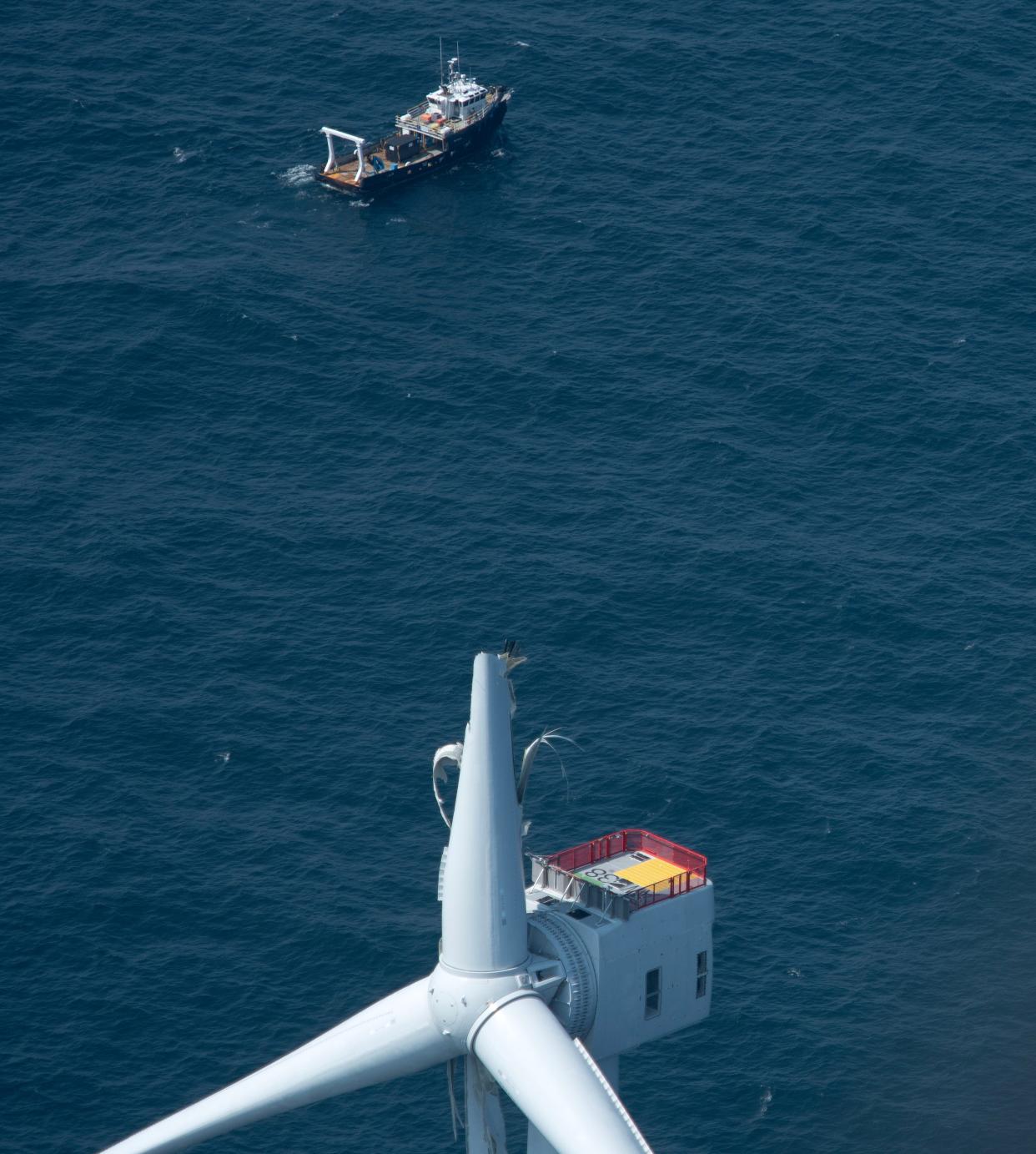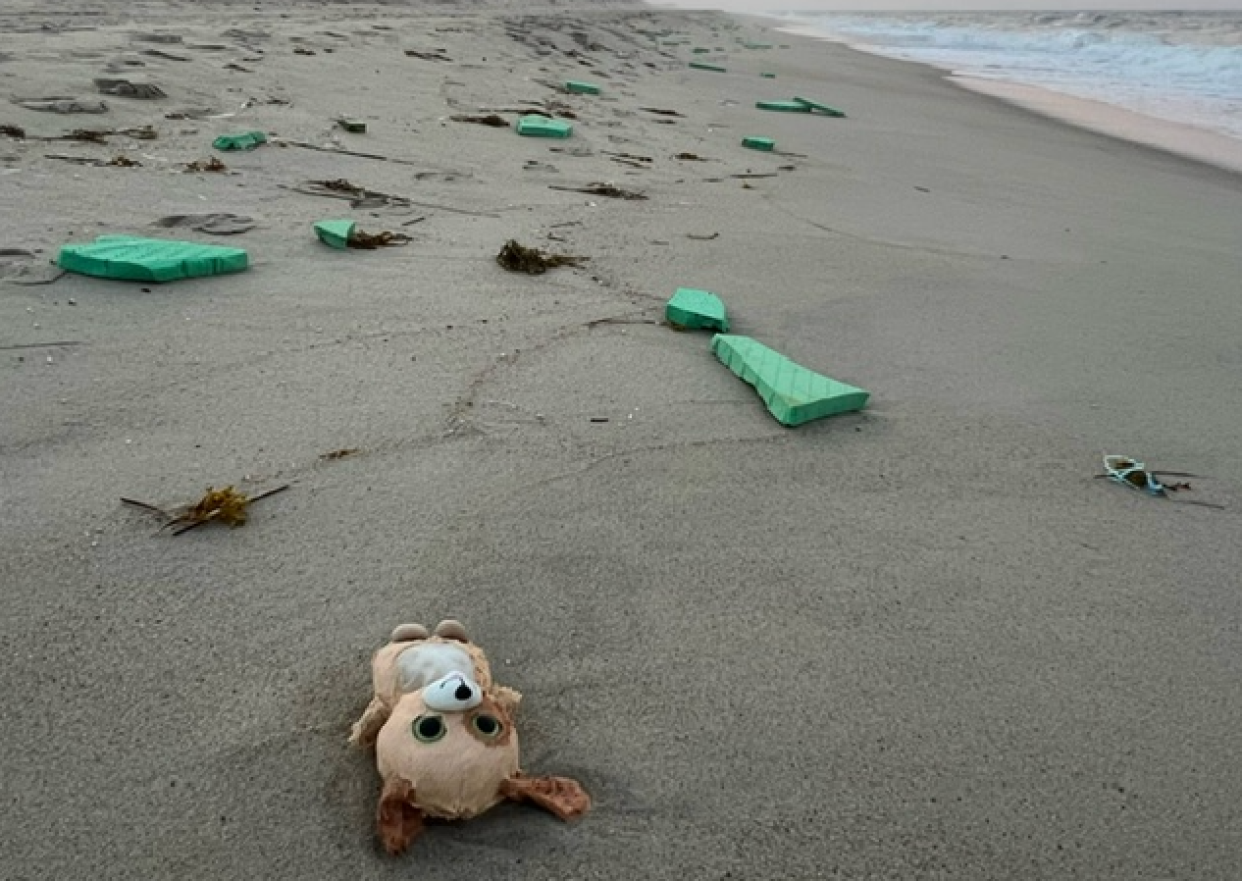Vineyard Wind construction resumes one month after turbine blade failure. What we know.
Even as investigations continue into what caused the blade on Vineyard Wind turbine AW-38 to collapse last month, sending splintered fiberglass, rigid foam and balsa wood into the ocean, limited construction is resuming on the 806-megawatt offshore project.
On Tuesday, Foss Maritime's Prevailing Wind barge — one of only two vessels in the world capable of transporting Vineyard Wind's massive turbine components in an upright position — left the New Bedford Marine Commerce terminal loaded with tower sections and a nacelle and headed for the project area south of Martha's Vineyard.
Also on board was a rack of three blades, though according to the wind developer this was "solely for the purpose of ensuring safe and balanced composition for the transport," not for installation. The company said the blades will be returned to the commerce terminal later this week.

Towers can go up, minus the blades
The construction work was suspended immediately following the July 13 blade failure by order of the federal Bureau of Safety and Environmental Enforcement, with the exception of survey work and inter-array cable installation. But as of Tuesday, the agency eased its suspension order to allow "certain limited additional activities, including the installation of towers and nacelles."
New blade installations, however, remain prohibited. The company also is not cleared to resume power production pending the ongoing investigation into the blade failure and inspection of all of the blades — both installed and awaiting installation at the marshalling pier — to ensure their integrity.
Engineers believe the football field-sized, GE Vernova-manufactured blade collapsed because of insufficient epoxy bonding that was not caught as part of quality control at the factory in Gaspe, Canada.
“As we take these important steps to resume installation activities, starting with towers and nacelles during GE Vernova’s ongoing blade inspection process, the safety of personnel and the environment remains our highest priority," Vineyard Wind CEO Klaus S. Møller said.
The federal agency is also undertaking its own investigation into the blade failure. Questioned about the agency's access to the site during last week's Nantucket Select Board meeting, a bureau representative acknowledged the agency doesn't have its own vessels. Instead, it relies on the Coast Guard, or uses a Vineyard Wind vessel, for which the company is reimbursed.
Critic: 'We remain concerned.'
Those who've raised concerns about offshore wind development and have pointed at the blade failure as reason to halt further work until all areas of concern are addressed, are critical of agency's decision to allow some work to continue.
Jerry Leeman, founder and CEO of the New England Fishermen's Stewardship Association is among them.
"Fishermen are waiting for a better account of the blade detachment," he said in an email Tuesday. "Without a more fulsome account from BSEE, we remain concerned that developers and regulators are prioritizing speed over safety and marine communities."
Recovery and cleanup continue
Work on removing what remains of the shattered blade also continued on Tuesday, taking out what Vineyard Wind and GE Vernova are characterizing as "a substantial amount" of the damaged blade. Land-based crews are also continuing efforts to recover debris that's washed ashore on the islands and Cape Cod.

”Our primary focus continues to be removing the parts of the blade that pose any risk of contributing further debris into the ocean,” said GE Vernova Chief Sustainability Officer Roger Martella.
Other continuing efforts may include additional cutting, removing debris from the turbine platform, removing the blade root, and addressing debris that's sunk to the seabed.
As of this week, 24 of 62 planned turbines are in place in the Vineyard Wind lease area, with a total of 72 blades installed. At least 10 of the turbines were commissioned and operational prior to the blade failure. The remainder, including the turbine with the broken blade, were still undergoing testing.
Heather McCarron writes about climate change, environment, energy, science and the natural world. Reach her at hmccarron@capecodonline.com.
Thanks to our subscribers, who help make this coverage possible. If you are not a subscriber, please consider supporting quality local journalism with a Cape Cod Times subscription. Here are our subscription plans.
This article originally appeared on Cape Cod Times: Vineyard Wind gets OK to build turbines after blade break, with limits
